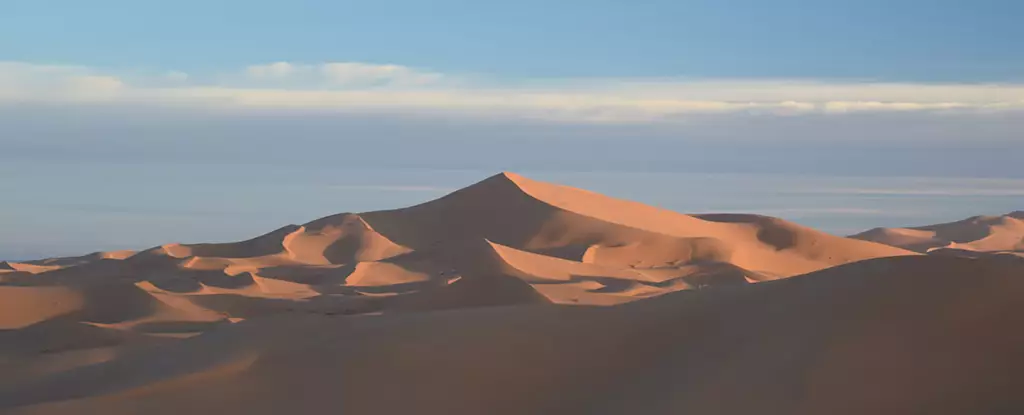The existence of giant star-shaped sand dunes in modern deserts has puzzled scientists for decades. Despite being commonly found in various modern deserts across the globe, these unique formations have been notably absent from geological records. The discovery of only one such dune that formed over 250 million years ago in north-east Scotland has raised questions about their absence in the rock record.
A recent study conducted by researchers from University College London and Aberystwyth University in the UK offers a compelling explanation for the absence of star dunes in geological records. The study focused on analyzing the Lala Lallia dune in southeast Morocco, which stands at an impressive height of 100 meters with radiating limbs extending 700 meters in total. By employing a mineral dating technique, the research team estimated that the base of the dune is approximately 13,000 years old.
The findings of the study revealed some surprising aspects of the Lala Lallia dune. Despite its ancient foundation, much of the upper dune formation occurred within the last thousand years, indicating a rapid rate of growth and movement. The dune is progressing westward across the desert at a speed of about 50 centimeters per year, which provides valuable insights into the formation and movement of star dunes.
The analysis of the Lala Lallia dune using ground-penetrating radar has enabled researchers to develop a new model for identifying star dunes in sedimentary rock. This breakthrough in understanding the formation of these colossal dunes opens up new possibilities for locating similar features in the geological record that may have gone unnoticed in the past. The study highlights the importance of utilizing new technologies to unveil the secrets of these enigmatic desert formations.
Despite the prevalence of star dunes in various desert regions, there is a notable lack of comprehensive studies on these remarkable geological features. The challenge now is to revisit the geological record armed with the insights gained from the study of the Lala Lallia dune. By reexamining existing data with a fresh perspective, researchers can potentially identify previously overlooked star dunes and expand our knowledge of these captivating desert structures.
The research on the Lala Lallia dune has provided crucial insights into the formation and movement of giant star-shaped sand dunes. By bridging the gap between modern desert landscapes and the geological record, scientists are now better equipped to identify and study these intriguing formations. The unraveling of the mystery surrounding star dunes opens up new avenues for exploration and discovery in the field of geology.

Leave a Reply